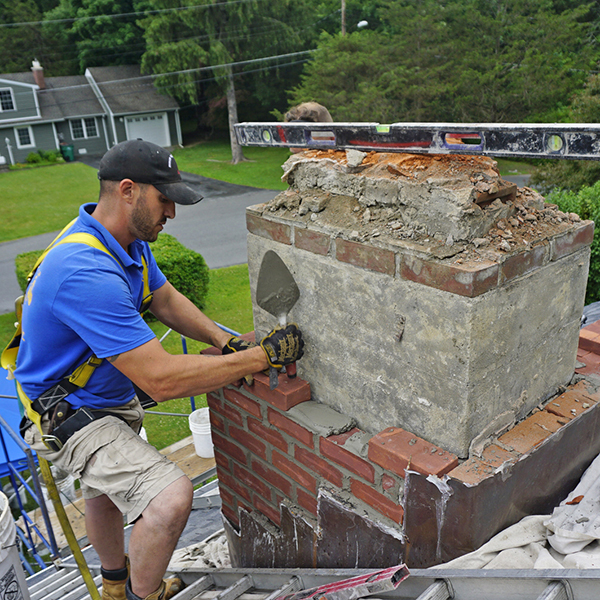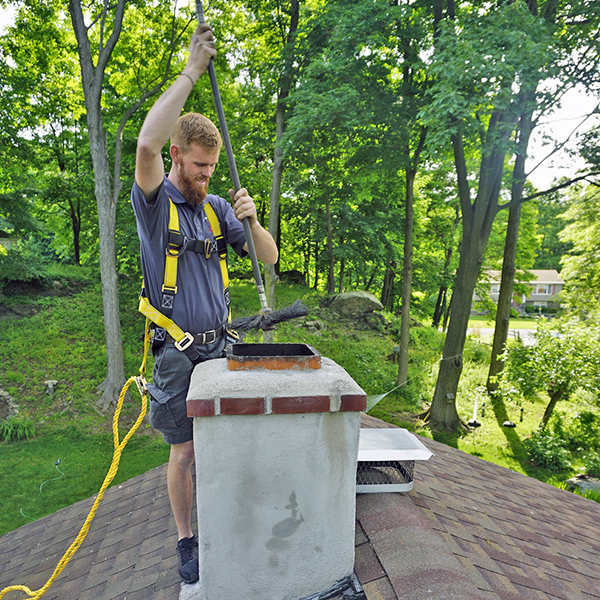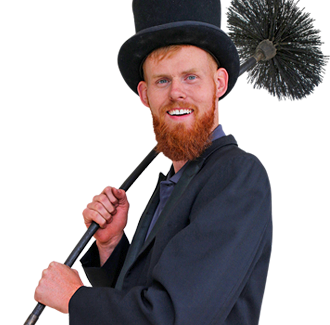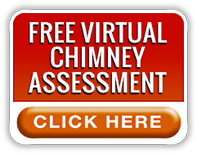How to Address 6 Common Problems With Older Chimneys
As strong as well-built chimneys are, they won’t last forever without some periodic maintenance. A fully functioning chimney is a safe chimney. One that is damaged or compromised won’t work efficiently and could be dangerous to the home and the people and pets who live in it. Here are six common problems with older chimneys and the proper solutions.
Damaged masonry
 A chimney’s bricks and mortar can be damaged by water infiltration and by events such as house-settling, lightning strikes, extreme hot/cold weather cycles, pounding hail and chimney fires.
A chimney’s bricks and mortar can be damaged by water infiltration and by events such as house-settling, lightning strikes, extreme hot/cold weather cycles, pounding hail and chimney fires.
Damaged masonry will continue to let in more water, which will lead to severe structural compromise. Spalling bricks can cause a chimney to lean and eventually collapse.
Solution: Certified inspection followed by tuckpointing, waterproofing or chimney rebuilding.
Cracked chimney liner
Older chimneys often have flue liners with some level of damage. Steel, clay and poured-in-place liners can crack and split, which leaves the interior bricks and nearby home building materials vulnerable to the intense heat from fires and the damaging effects of smoke and creosote.
Solution: Inspection followed by repair of the chimney liner or the installation of a new one. Masonry repair may also be necessary.
Excess creosote buildup
The smoke from wood fires causes creosote to build up in your chimney. If not cleaned out on a regular basis, creosote can easily ignite and start a chimney fire. This is a common problem with old, neglected chimneys.
Solution: Inspection and chimney cleaning by a trained, CSIA-certified chimney sweep.
(NOTE: When scheduling chimney sweep services, make sure the technician carries certification through the Chimney Safety Institute of America.)
Flue obstructions
 In addition to creosote, flues are prone to obstructions from tree debris, the nests of small animals and the animals themselves when they die inside the chimney. A narrowing of the flue results in sluggish smoke drafting and can send smoke and deadly carbon monoxide into the home.
In addition to creosote, flues are prone to obstructions from tree debris, the nests of small animals and the animals themselves when they die inside the chimney. A narrowing of the flue results in sluggish smoke drafting and can send smoke and deadly carbon monoxide into the home.
Solution: Same as above – inspection followed by professional chimney cleaning along with determination of why the obstructions got into the chimney. If there is no chimney cap, one should be installed.
Chimney cap and crown damage
The chimney crown (the cement that covers everything at the top of the chimney except the flue pipes) and the chimney cap (the structure that covers the entire top of the chimney) can become worn, cracked and otherwise damaged over time. The urgent concern in this case is keeping infiltrating water from causing severe damage to the bricks below the crown, the flue liner and even parts of the home itself.
Solution: Inspection to assess the damage. Rebuilding or waterproofing the crown; repair or replacement of the cap.
Broken or damaged fireplace damper
Inspections of older chimneys often turn up dampers that are broken or rusted and no longer open and close as they should. When a damper won’t open correctly, smoke drafting will be impeded. When it can’t close tightly, conditioned air inside the house will escape, and un-conditioned air from outside will come in.
Solution: Inspection followed by damper repair or replacement.
Hudson Valley Chimney of Poughkeepsie, NY, provides CSIA-certified chimney inspection, chimney sweep and chimney repair services to solve all these older-chimney problems and keep your chimney running safely and properly. Get prompt service by calling (845) 471-1071.








